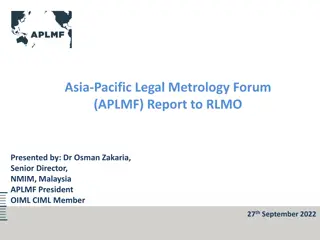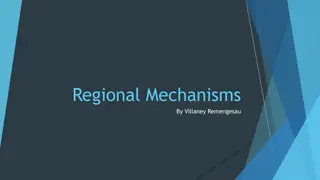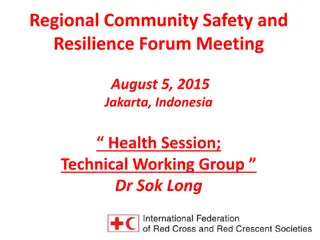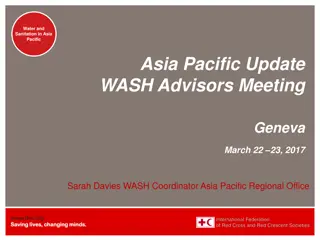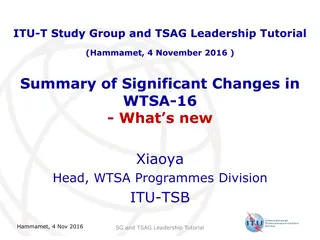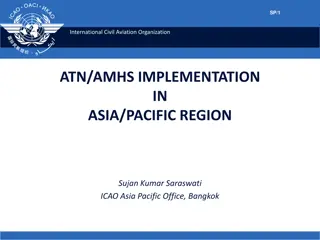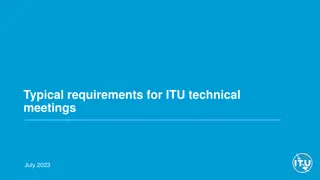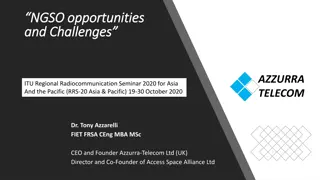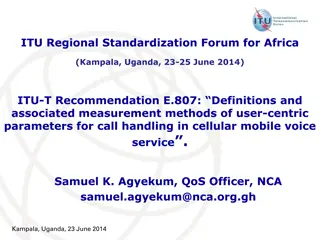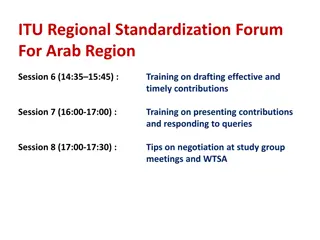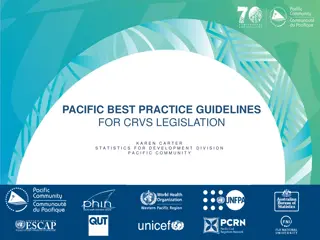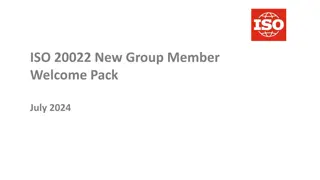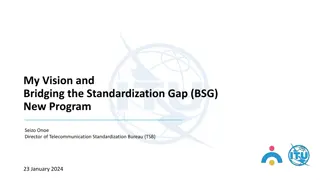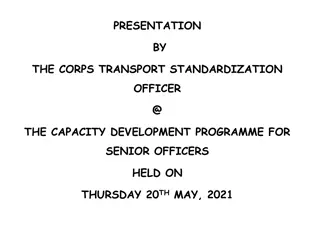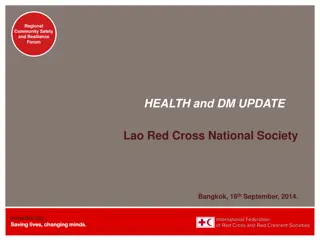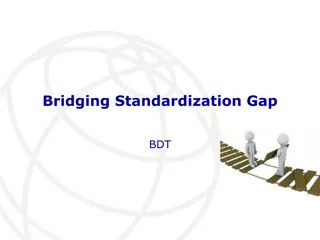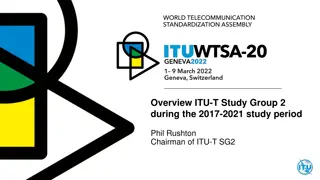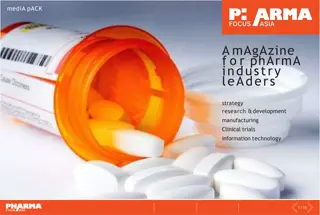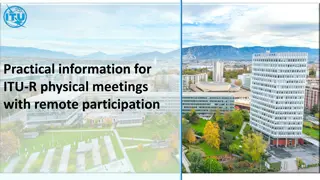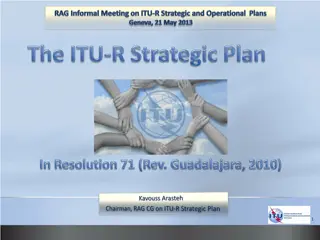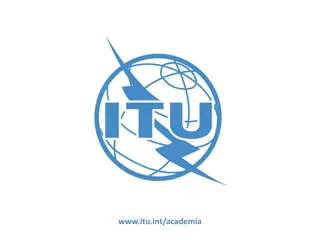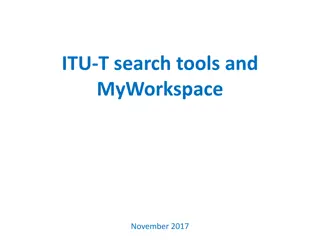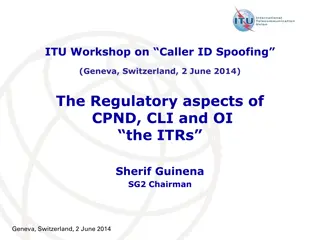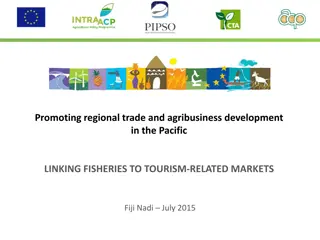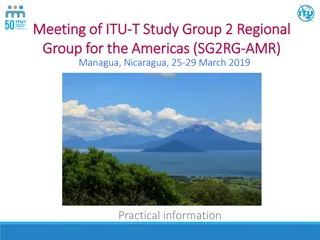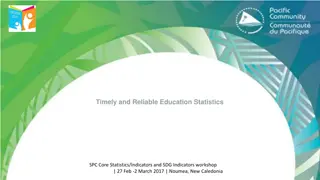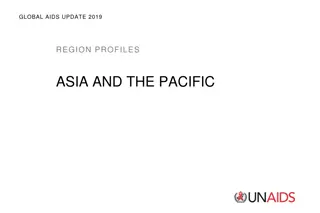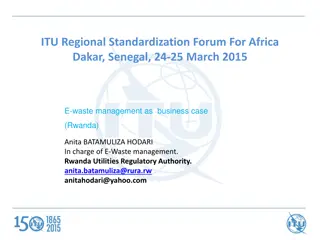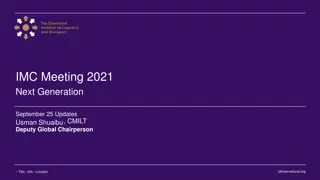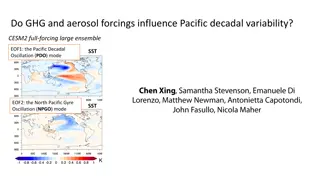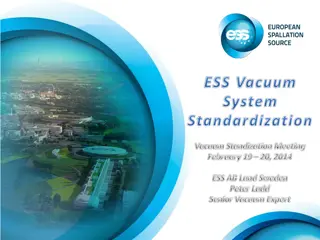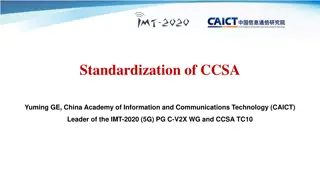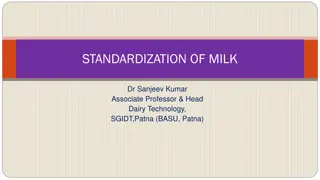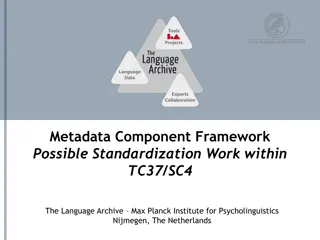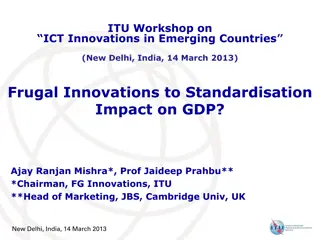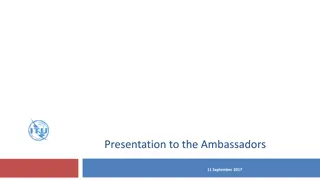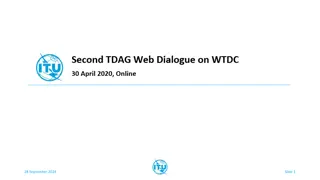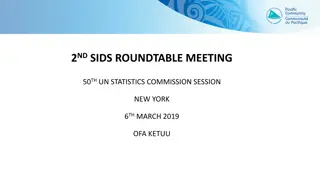ITU Regional Standardization Forum for Asia-Pacific: Review of Study Group Structure
The ITU Regional Standardization Forum for Asia-Pacific in Da Nang, Vietnam, held on August 22, 2016, reviewed the structure of ITU-T Study Groups. The vision and objectives of WTSA-16, the current ITU-T structure, and the proposed enhancements to WTSA-16 were discussed. Emphasis was placed on preparing for 2020, increasing industry relevance, and attracting global interest through engaging plenary sessions on emerging technologies. Suggestions were invited for speakers focusing on 5G, IoT, smart cities, and other cutting-edge topics.
Download Presentation

Please find below an Image/Link to download the presentation.
The content on the website is provided AS IS for your information and personal use only. It may not be sold, licensed, or shared on other websites without obtaining consent from the author. Download presentation by click this link. If you encounter any issues during the download, it is possible that the publisher has removed the file from their server.
E N D
Presentation Transcript
ITU Regional Standardization Forum for Asia Pacific Region Da Nang City, Vietnam 22 August 2016 Review of ITU-T Study Group Structure Xiaoya Yang Head of WTSA Programmes Division, ITU-TSB xiaoya.yang@itu.int
Contents 1. Vision and Objectives of WTSA-16 2. Study Group Structure
Contents 1. Vision and Objectives of WTSA-16 2. Study Group Structure
Vision of WTSA-16 (1/2) Minimum Objective: Ready for 2020 Expected message from WTSA 2016 re-structuring: Standard development platform: ready for 2020 and beyond ICT plays a crucial role in convergence, and so should ITU-T Valuable place for industry production and market developments Tactile awareness about the technology trend and market flows Enhance Relevance of ITU-T activities and value to Membership: Members, markets and businesses Balance of roles between developed and developing Clearer visibility on standards/technology targets Better coherence of Infrastructure
Vision of WTSA-16 (2/2) Raise level of WTSA-16 and make this the best ever WTSA Less inward-looking and procedure-focused Make it interesting to the world outside ITU Spice up plenary sessions with talks by renowned speakers on 5G, IoT, smart cities, video is the future, over-the-top services, digital financial services, optical fibre, trust/security/privacy, big data, e-health, connected car Your suggestions welcome for speakers
Contents 1. Vision and Objectives of WTSA-16 2. Study Group Structure
ITU-T current structure (1): ITU-T Eleven Study Groups SG2 Operational aspects SG3 Economic and policy issues SG5 Environment and climate change SG9 Broadband cable and TV SG11 Protocols and test specifications SG12 Performance, QoS and QoE SG13 Future networks (incl. cloud) SG15 Transport and access SG16 Multimedia SG17 Security SG20 IoT & Smart Cities
ITU-T current structure (2): ITU-T Focus Groups Augment the Study Group system Way to quickly react to ICT standardization needs Great flexibility of working methods Open to non-member participants Current Focus Groups: 1. 5G/IMT-2020 Wireline 2. Digital financial services 3. Aviation applications of cloud computing for flight data monitoring 4. Smart sustainable cities 5. Bridging the gap: from innovation to standards 6. Smart water management
Study Group Restructuring At TSAG in February: No formal proposal from membership TSB Director s food for thought TSB Circular Letter 204, 8 March: hold on with submitting applications for chairmen/VC until TSAG July when study structure will have become clearer No longer running: chairmen of ITU-T SG5, 9, 11, 16, 17 Table with term limits of chairmen/vice-chairmen: here
Study Group Structure: Functions and Elements Equipped with functions and elements: Service and applications (Telecom media based and Cable based) Key Functions: Transport (very big), Control (small), Management (very small), QoS/QoE, Security and Environments/Energy Essential elements: Use cases, Requirements, Architectures, Mechanisms, Protocols, C&I, NNAI, and EPI (Economic and Policy Issues) Except End user devices Enough # of Members: MS + SM (269) + Associates (144) + Academia (110) Many tools: SG, FG, Workshop, Academia Events and Seminars Good at references and information Relatively weak at contribution to market & industry So far ITU-T is mainly working on building blocks, not so much on solutions, i.e. ITU-T Recommendations mainly address specific elements (protocols etc.), whilst implementations of products or even networks requires implementation of multiple Recommendations TD 419/TSAG, Feb 2016 -
Study Group Structure: Status of Relationships EPI: Economic and Policy Issues MM: Multi-Media CATV: Cable TV Id: Identification Env: Environment Eng: Energy IoT/SC M a n a g e m e n t C o n t r o l MM Requirements Functions Architectures CATV ? EPI Security Env Eng Number (Id?) QoS/QoE ? ? Transport (being expanded)
Study Group Structure: Expected Model Serv/App oriented Functions Serv/App oriented Functions Serv/App oriented Functions Operational, EPI Functions Common Use Functions (Qos, Security etc) Infrastructure Functions
Study Group Structure: recurring issues since WTSA-08 None of groups in favor to merge Unsuccessful past merger proposals: SG2 + SG3 SG11 + SG13 SG9 + SG16 No agreement up to WTSA-12 Collocated meeting (not always possible): SG2 and SG3 SG11 and SG13 SG9 and SG16 Good to reduce # of SGs? But what s the value? - Impact for fulfilling Strategic Objectives - Ready for 2020 - Enhance visibility and relevance
Study Group Structure: Classifying SGs Possibly four categories of SG: Operational (Policy/Regulation), Commonly used functions, Service/Application oriented, and Infrastructure SG 17 SG 20 SG 15 SG 13 SG 3 SG 12 SG 16 SG 2 SG 5 SG 9 SG 11 M Common Used Functions Service Application Oriented Infrastructure Operational M: Management
Study Group Structure: Mapping to the Model Ser/App Functions (SG9) Ser/App Functions (SG16) Ser/App Functions (SG20) Operational (SG2, SG3) Functions Common Functions (SG5, SG12, SG17) Infrastructure Functions (SG 11, SG13, SG15, WP2/2)*
Study Group Structure: Strengthen Infrastructure Management Control Transport Management Overall Use cases Requirements Func/Architectures Mechanisms Solutions SG X SG Y SG11 + SG13 + SG15 + WP2/2 (Access Infrastructure) (Core Infrastructure) Further issues: C&I, Counterfeit, Outside Plant, Home networks
Study Group Structure: Possible way forward CATV IoT/SC MM EPI QoS/QoE Security Env/Eng Further detailed arrangements among SGs should be followed Number (Id?)
Study Group Structure: Meeting duration and frequency Enhance Production: Dynamic, Flexible, Efficient, and Effective Study Group Study Group 8 (or 6) months S W R R W S S W R R W S 2 W or 10 D 2 W or 10 D S: Study Group Plenary W: Working Party Plenary R: Rapporteur Group session/meeting SG SG Could be 8 (or 6) months W R R S W R R S 1 W /5 D 1 W /5 D R R R W R R R S 3~5 D 3~5 D 3~5 D 3~5 D


